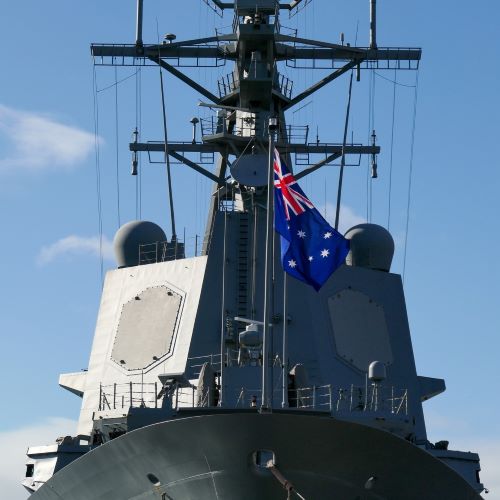06 May 2025
 A new planning formula to optimise the lifecycle value of Australia’s warships in an era of geopolitical instability has been proposed by researchers at the University of South Australia.
A new planning formula to optimise the lifecycle value of Australia’s warships in an era of geopolitical instability has been proposed by researchers at the University of South Australia.
Based on an existing model used in financial decision making – the Real Options Approach (ROA) – but with modifications to address the unique nature of warship planning, the formula has the potential to transform the way the Royal Australian Navy (RAN) manages its fleet.
“Due to diminishing budgets, rapid advances in technology, and emerging threats, it is more important than ever to build a naval framework that is more flexible and cost effective,” according to lead researcher Ben Petersen, a recent UniSA graduate who undertook this research as part of his university degree.
Along with UniSA systems engineer Dr Mahmoud Efatmaneshnik, the pair recently outlined their proposed model to the International Symposium on Systems Engineering, held in Italy in late 2024.
“Military assets such as warships and other naval vessels must maintain high levels of readiness and capability despite constrained financial resources,” Mr Petersen says.
“Warships typically undergo major upgrades every seven to 10 years, with a service life of approximately 30 years, unlike other industries that have much shorter product lifecycles. These upgrades are substantial in scale and complexity, and they often go way over projected budgets.
“Traditional lifecycle planning models for warships are rigid and do not account for uncertainties in long-term naval investments, such as technological advancements, geopolitical shifts or budget constraints.”
Using an adaptation of the ROA model, naval forces will be able to assess multiple future scenarios, reducing the risk of overinvestment or premature commissioning, according to the researchers in a new paper.
The research identified key benefits to adopting a Real Options Approach:
- Operational readiness – ensuring that naval assets remain technologically advanced and mission-capable over time
- Cost Efficiency – more efficient budgeting, prioritising upgrades and maintenance that deliver the best value
- Risk Mitigation – reducing the financial and strategic risks associated with overinvestment in outdated technologies
- Sovereign Defence Capability – supporting Australia’s goal of strengthening its defence industry by improving long-term planning for sustainable ship building.
With Australia investing heavily in maritime defence capabilities – including the Hunter-class frigates, nuclear-powered submarines under the AUKUS agreement, and upgrades to existing vessels – Dr Efatmaneshnik says the research is highly relevant.
“By applying financial risk management principles to warship design, acquisition, and maintenance, our study offers a new model for sustaining naval superiority in an era of geopolitical uncertainty,” he says.
“Australia’s defence environment is evolving rapidly. Our research provides a clear pathway for defence planners to ensure that our warships remain at peak capability while maximising taxpayer investment in national security.”
Mr Petersen says the next steps involve improving the model to capture additional nuances in naval warship designs, and to avoid oversimplification.
…………………………………………………………………………………………………………………………
Media contact: Candy Gibson M: +61 434 605 142 E: candy.gibson@unisa.edu.au



